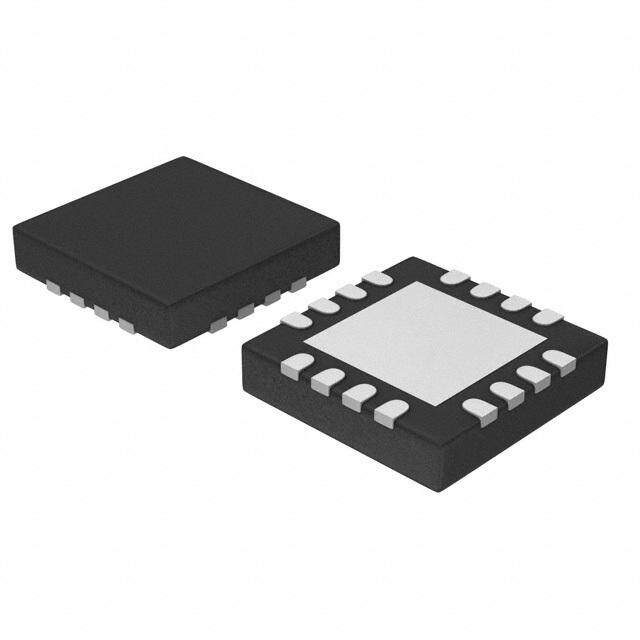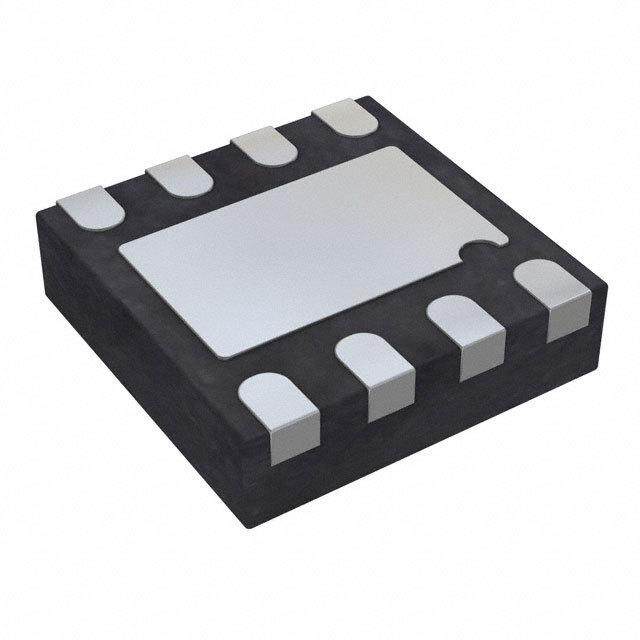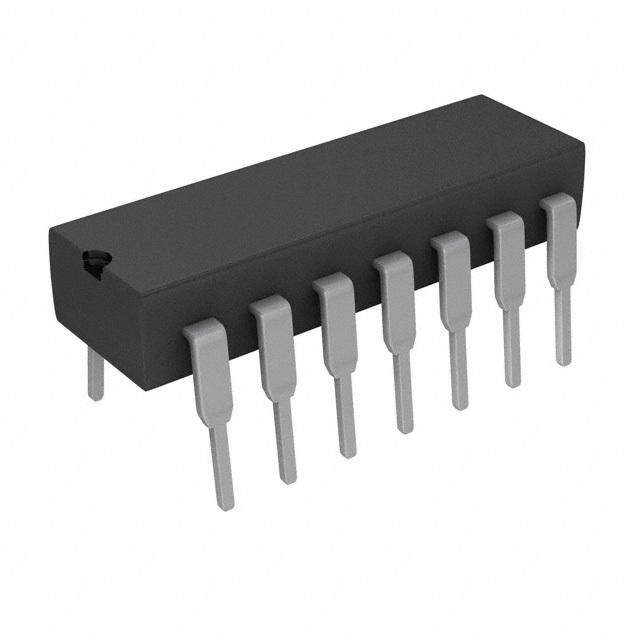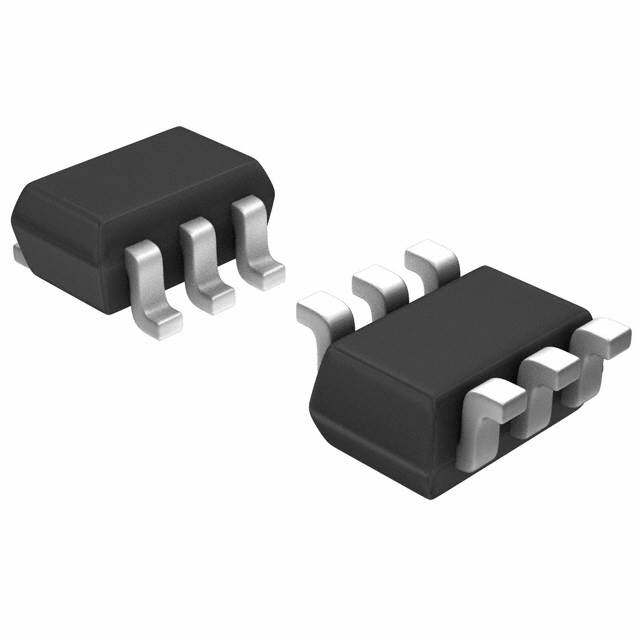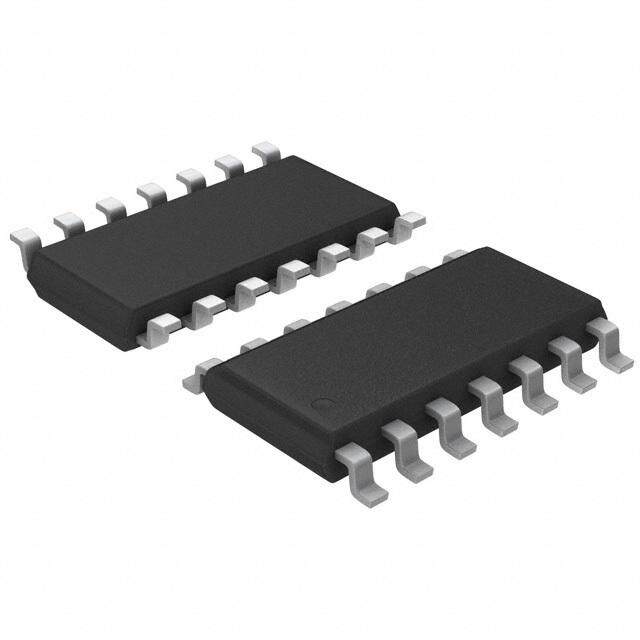ICGOO在线商城 > 集成电路(IC) > 线性 - 放大器 - 仪表,运算放大器,缓冲器放大器 > PA89
- 型号: PA89
- 制造商: Apex Microtechnology Corporation
- 库位|库存: xxxx|xxxx
- 要求:
| 数量阶梯 | 香港交货 | 国内含税 |
| +xxxx | $xxxx | ¥xxxx |
查看当月历史价格
查看今年历史价格
PA89产品简介:
ICGOO电子元器件商城为您提供PA89由Apex Microtechnology Corporation设计生产,在icgoo商城现货销售,并且可以通过原厂、代理商等渠道进行代购。 PA89价格参考。Apex Microtechnology CorporationPA89封装/规格:线性 - 放大器 - 仪表,运算放大器,缓冲器放大器, 功率 放大器 1 电路 12-DIP。您可以下载PA89参考资料、Datasheet数据手册功能说明书,资料中有PA89 详细功能的应用电路图电压和使用方法及教程。
| 参数 | 数值 |
| -3db带宽 | - |
| 产品目录 | 集成电路 (IC) |
| 描述 | IC OPAMP POWER 10MHZ 12DIP |
| 产品分类 | Linear - Amplifiers - Instrumentation, OP Amps, Buffer Amps |
| 品牌 | Apex Microtechnology |
| 数据手册 | |
| 产品图片 | |
| 产品型号 | PA89 |
| rohs | 无铅 / 符合限制有害物质指令(RoHS)规范要求 |
| 产品系列 | Apex Precision Power® |
| 产品培训模块 | http://www.digikey.cn/PTM/IndividualPTM.page?site=cn&lang=zhs&ptm=30464 |
| 产品目录页面 | |
| 供应商器件封装 | 12-DIP |
| 其它名称 | 598-1329 |
| 包装 | 管件 |
| 压摆率 | 16 V/µs |
| 增益带宽积 | 10MHz |
| 安装类型 | 通孔 |
| 封装/外壳 | 12-DIP 模块 |
| 工作温度 | -25°C ~ 85°C |
| 放大器类型 | 功率 |
| 标准包装 | 1 |
| 电压-电源,单/双 (±) | 150 V ~ 1200 V, ±75 V ~ 600 V |
| 电压-输入失调 | 500µV |
| 电流-电源 | 4.8mA |
| 电流-输入偏置 | 5pA |
| 电流-输出/通道 | 75mA |
| 电路数 | 1 |
| 输出类型 | - |





PDF Datasheet 数据手册内容提取
PA89 • PA89A RoHS High Voltage Power Operational Amplifiers COMPLIANT FEATURES • 1140V P-P Signal Output • Wide Supply Range — ±75V to ±600V • Programmable Current Limit • 75 mA Continuous Output Current • Hermetically Sealed Package • Input Protection APPLICATIONS • Piezoelectric Positioning • High Voltage Instrumentation • Electrostatic Deflection • Semiconductor Testing DESCRIPTION The PA89 is an ultra high voltage, MOSFET operational amplifier designed for output currents up to 75 mA. Output voltages can swing over 1000V p-p. The safe operating area (SOA) has no second breakdown lim- itations and can be observed with all types of loads by choosing an appropriate current limiting resistor. High accuracy is achieved with a cascode input circuit configuration and 120dB open loop gain. All internal biasing is referenced to a bootstrapped zener-MOSFET current source, giving the PA89 a wide supply range and excellent supply rejection. The MOSFET output stage is biased for class A/B linear operation. External com- pensation provides user flexibility. The PA89 hermetic seal is 100% tested to the requirements of MIL-STD- 883 method 1014 for fine and gross leak. This hybrid integrated circuit utilizes a Beryllia (BeO) substrate, thick film resistors, ceramic capacitors and semiconductor chips to maximize reliability, minimize size and give top performance. Ultrasonically bonded aluminum wires provide reliable interconnections at all operating temperatures. The MO-127 High Voltage, Power Dip™ package is hermetically sealed and electrically isolated. The use of compressible ther- mal washers will void the product warranty. © Apex Microtechnology Inc. Dec 2016 www.apexanalog.com All rights reserved PA89U Rev O
PA89 • PA89A EQUIVALENT SCHEMATIC Figure 1: Equivalent Schematic 8 +V S D1 Q3 Q19 Q1 Q2 D57 Q20 COMP C L 9 10 Q26 7 Q22 Q23 –IN +IN Q25A Q25B 1 2 Q29 6 OUT Q36 D30 D34 D35 D31 Q42 Q44 Q45 D5 –V S 5 2 PA89U Rev O
PA89 • PA89A TYPICAL CONNECTION Figure 2: Typical Connection * * Note: *Bulk bypass capacitors use 10µF per Amp of output current. PA89U Rev O 3
PA89 • PA89A PINOUT AND DESCRIPTION TABLE Figure 3: External Connections Pin Number Name Description 1 -IN The inverting input. 2 +IN The non-inverting input. 5 -Vs The negative supply rail. 6 OUT The output. Connect this pin to load and to the feedback resistors. Connect to the current limit resistor. Output Current flows into/out of these pins 7 CL through R . The output pin and the load are connected to the other side of R . CL CL 8 +Vs The positive supply rail. Compensation resistor connection. Select value based on Phase Compensation. 9 RC See applicable section. Compensation capacitor connection. Select value based on Phase Compensation. 10 CC See applicable section. 3, 4, 11, 12 NC No connection. 4 PA89U Rev O
PA89 • PA89A CHARACTERISTICS AND SPECIFICATIONS Unless otherwise noted: T = 25°C, C = 68pF, R = 220 Ω, and V = ±500V. Input parameters for bias currents C C C S and offset voltage are ± values given. ABSOLUTE MAXIMUM RATINGS Parameter Symbol Min Max Units Supply Voltage, total +V to -V 1200 V s s Output Current, source, within SOA I 100 mA O Power Dissipation, continuous @ T = 25°C P 40 W c D Input Voltage, differential V ±25 V IN (Diff) Input Voltage, common mode V ±V -50V V cm S Temperature, pin solder, 10s max. 350 °C Temperature, junction 1 TJ 150 °C Temperature, storage -65 +150 °C Operating Temperature Range, case T -55 +125 °C C 1. Long term operation at the maximum junction temperature will result in reduced product life. Derate internal power dis- sipation to achieve high MTTF. The PA89 is constructed from MOSFET transistors. ESD handling procedures must be observed. CAUTION The internal substrate contains beryllia (BeO). Do not break the seal. If accidentally broken, do not crush, machine, or subject to temperatures in excess of 850°C to avoid generating toxic fumes. PA89U Rev O 5
PA89 • PA89A INPUT PA89 PA89A Test Parameter Units Conditions Min Typ Max Min Typ Max Offset Voltage, initial 0.5 2 0.25 0.5 mV Offset Voltage vs. temperature Full temp range 10 30 5 10 µV/°C Offset Voltage vs. supply 7 * µV/V Offset Voltage vs. time 75 * µV/kh Bias Current, initial 1 5 50 3 10 pA Bias Current vs. supply 0.01 * pA/V Offset Current, initial 1 5 50 3 20 pA Input Impedance, DC 1011 * Ω Input Capacitance 4 * pF Common Mode Voltage Range 2 Full temp range ±VS-50 * V Full temp range, Common Mode Rejection, DC 96 110 * * dB V = ±90V CM 10 kHz BW, R = S Input Noise 4 * µV RMS 10 k, C = 15pF C 1. Doubles for every 10 °C of temperature increase. 2. +V and –V denote the positive and negative power supply rail respectively. S S GAIN PA89 PA89A Test Parameter Units Conditions Min Typ Max Min Typ Max R =10 kΩ, L Open Loop Gain at 15Hz 108 120 * * dB C =15pF C R =10 kΩ, L Gain Bandwidth Product C =15pF, 10 * MHz C A =100 V R =10 kΩ, L Power Bandwidth C =15pF, 5 * kHz C V = 500V p-p O Full temp range, Phase Margin 60 * ° A = 10 V 6 PA89U Rev O
PA89 • PA89A OUTPUT PA89 PA89A Test Parameter Units Conditions Min Typ Max Min Typ Max Voltage Swing 1 IO = 75mA ±VS-45 ±VS-30 * * V Full temp range, Voltage Swing 1 I = 20mA ±VS-20 ±VS-12 * * V O Current, continuous Full temp range 75 * mA Slew Rate C =15pF,A =100 12 16 * * V/µs C V Capacitive Load, Av = 10 Full temp range 1 * nF Capacitive Load, Av>10 Full temp range SOA * R = 10 kΩ, 10V Settling Time to 0.1% L 2 * µs step, Av = 10 1. +V and –V denote the positive and negative supply rail respectively. S S POWER SUPPLY PA89 PA89A Test Parameter Units Conditions Min Typ Max Min Typ Max Voltage, V 1 Full temp range ±75 ±500 ±600 * * * V S Current, quiescent 4.8 6.0 * * mA 1. +V and –V denote the positive and negative supply rail respectively. S S THERMAL PA89 PA89A Test Parameter Units Conditions Min Typ Max Min Typ Max Full temp range, Resistance, AC, junction to case1 2.1 2.3 * * °C/W F > 60 Hz Full temp range, Resistance, DC, junction to case 3.3 3.5 * * °C/W F < 60 Hz Resistance, junction to air Full temp range 15 * °C/W Meets full range Temperature Range, case -25 +85 * * °C specifications 1. Rating applies only if the output current alternates between both output transistors at a rate faster than 60 Hz. Note: *The specification of PA89A is identical to the specification for PA89 in applicable column to the left. PA89U Rev O 7
PA89 • PA89A TYPICAL PERFORMANCE GRAPHS Figure 4: Power Derating Figure 5: Quiescent Current 40 1.10 ) X ( Q age Internal (cid:895)(cid:116)(cid:894)(cid:87)(cid:3)(cid:853)(cid:374)(cid:381)(cid:415)(cid:258)(cid:393) 2342 cent Current, I 11..0050 t(cid:349)(cid:400) s t S(cid:400)(cid:349)(cid:24) 16 uie pu(cid:3)(cid:396) Q Out(cid:286)(cid:449)(cid:381) zed 0.95 (cid:87) 8 ali m r o N 0 0.9 0 25 50 75 100 125 150 0 200 400 600 800 1000 1200 Case Temperature, T (°C) Total Supply Voltage, V (V) C S Figure 6: Small Signal Response Figure 7: Phase Response 120 0 (cid:1005)(cid:1009)(cid:393)(cid:296)(cid:853)(cid:3)(cid:1006)(cid:1006)(cid:1004)(cid:3)(cid:591) 100 -45 (cid:1007)(cid:1007)(cid:393)(cid:296)(cid:853)(cid:3)(cid:1006)(cid:1006)(cid:1004)(cid:3)(cid:591) ) (cid:1007)(cid:1007)(cid:393)(cid:296)(cid:853)(cid:3)(cid:1006)(cid:1006)(cid:1004)(cid:3)(cid:591) B d 80 A ( -90 n, 60 (cid:894)(cid:931)(cid:895) ai (cid:711)(cid:3) op G 40 ase, -135 (cid:1010)(cid:1012)(cid:393)(cid:296)(cid:853)(cid:3)(cid:1006)(cid:1006)(cid:1004)(cid:3)(cid:591) o h n L (cid:1010)(cid:1012)(cid:393)(cid:296)(cid:853)(cid:3)(cid:1006)(cid:1006)(cid:1004)(cid:3)(cid:591) P -180 e 20 p O -225 (cid:1005)(cid:1009)(cid:393)(cid:296)(cid:853)(cid:3)(cid:1006)(cid:1006)(cid:1004)(cid:3)(cid:591) 0 C , R C , R C C C C -20 -270 1 10 100 1k 10k 100k 1M 10M 1 10 100 1k 10k 100k 1M 10M Frequency, F (Hz) Frequency, F (Hz) 8 PA89U Rev O
PA89 • PA89A Figure 8: Output Voltage Swing Figure 9: Power Response 45 1200 ) 1000 V 40 ( O 800 V- VS 35 ) P-P 600 CC = 15pf ply, 30 V(VO 500 up 25 e, S g m ta o 20 ol 300 r V op f 15 put C = 33pf Dr ut C e 10 O g C = 68pf a C olt 5 V R (cid:3)(cid:1089)(cid:3)(cid:1006)(cid:1006)(cid:1004)(cid:3)(cid:591) 0 100 C 0 25 50 75 100 1k 3k 10k 30k 100k Output Current, I (mA) Frequency, F (Hz) O Figure 10: Slew Rate vs. Comp Figure 11: Harmonic Distortion 20 10 V = ±500V S C = 15pf, R (cid:3)(cid:1089)(cid:3)(cid:1006)(cid:1006)(cid:1004)(cid:3)(cid:591) C C 1 R(cid:3)(cid:1089)(cid:3)(cid:1005)(cid:1005)(cid:3)(cid:364)(cid:591) (cid:645)(cid:400)(cid:895) 15 ) (cid:1081) ALV = 100 (cid:894) (cid:876)(cid:3) (cid:24)(cid:3) (cid:115) (cid:894) (cid:44) (cid:410)(cid:286)(cid:853)(cid:3)(cid:3) (cid:374)(cid:853)(cid:3)(cid:100) 0.1 VO = 800Vpp (cid:258) (cid:381) (cid:90) (cid:415) V = 600Vpp (cid:449)(cid:3) (cid:381)(cid:396) O (cid:286) 10 (cid:410) (cid:94)(cid:367) (cid:24)(cid:349)(cid:400) 0.01 VO = 400Vpp V = 100Vpp O 5 0.001 0 25 50 75 100 30 100 300 1k 3k 10k 30k 100k (cid:28)(cid:454)(cid:410)(cid:856)(cid:3)(cid:18)(cid:381)(cid:373)(cid:393)(cid:286)(cid:374)(cid:400)(cid:258)(cid:415)(cid:381)(cid:374)(cid:3)(cid:18)(cid:258)(cid:393)(cid:258)(cid:272)(cid:349)(cid:410)(cid:381)(cid:396)(cid:853)(cid:3)(cid:18) (pF) Frequency, F (Hz) C PA89U Rev O 9
PA89 • PA89A Figure 12: Input Noise Voltage Figure 13: Common Mode Rejection 20 100 ) (cid:17) (cid:895) 15 (cid:282) (cid:1103)(cid:44)(cid:460) (cid:68)(cid:90)(cid:3)(cid:894) 80 (cid:876) e, e(cid:3)(cid:894)(cid:374)(cid:115)N 170 (cid:272)(cid:415)(cid:381)(cid:374)(cid:853)(cid:3)(cid:18) 60 g (cid:286) a (cid:286)(cid:361) Volt 5 (cid:282)(cid:286)(cid:3)(cid:90) 40 e (cid:381) s (cid:68) Noi (cid:374)(cid:3) ut 3 (cid:373)(cid:381) 20 p (cid:373) n I (cid:381) (cid:18) 2 0 10 100 1k 10k 100k 1 10 100 1k 10k 100k 1M 10M Frequency, F (Hz) Frequency, F (Hz) Figure 14: Power Supply Rejection Figure 15: Current Limit 100 100 (cid:895) (cid:17) (cid:282) (cid:94)(cid:90)(cid:3)(cid:894) 80 (cid:4)(cid:895) 80 (cid:87) (cid:374)(cid:853)(cid:3) (m (cid:286)(cid:272)(cid:415)(cid:381) 60 t, ILIM 60 (cid:286)(cid:361) mi (cid:393)(cid:367)(cid:455)(cid:3)(cid:90) 40 nt Li 40 (cid:393) e (cid:437) rr (cid:94) u (cid:286)(cid:396)(cid:3) 20 C 20 (cid:449) (cid:381) (cid:87) 0 0 1 10 100 1k 10k 100k 1M 10M 0 20 40 60 80 100 Frequency, F (Hz) Resistor Value, R (cid:3)(cid:894)(cid:591)(cid:895) CL 10 PA89U Rev O
PA89 • PA89A SAFE OPERATING AREA (SOA) The safe operating area curves define the maximum additional internal power dissipation the amplifier can tolerate when it produces the necessary output to drive an external load. This is not the same as the absolute maximum internal power dissipation listed elsewhere in the specification since the quiescent power dissipation is significant compared to the total. The MOSFET output stage of this power operational amplifier has two distinct limitations: 1. The current handling capability of the MOSFET geometry and the wire bonds. 2. The junction temperature of the output MOSFETs. Note: The output stage is protected against transient flyback. However, for protection against sustained, high energy flyback, external fast-recovery diodes should be used. Figure 16: SOA 100 (cid:1005)(cid:1004)(cid:373)(cid:94) ) (cid:4) (cid:373) 25°C (cid:894) 50 S V (cid:882) (cid:1005)(cid:1004)(cid:1004)(cid:373)(cid:94) (cid:3) (cid:396) (cid:381) 30 (cid:3) S V (cid:1085) (cid:3) (cid:373) (cid:381) 125°C 85°C 15 (cid:396) (cid:38) (cid:3) (cid:410) (cid:374) 10 (cid:286) (cid:396) (cid:396) (cid:437) (cid:18) (cid:3) (cid:410) (cid:437) 5 (cid:393) (cid:410) (cid:437) T = T (cid:75) (cid:18)(cid:4)(cid:94)(cid:28) 3 100 200 300 500 1000 (cid:94)(cid:437)(cid:393)(cid:393)(cid:367)(cid:455)(cid:3)(cid:410)(cid:381)(cid:3)(cid:75)(cid:437)(cid:410)(cid:393)(cid:437)(cid:410)(cid:3)(cid:24)(cid:349)(cid:299)(cid:286)(cid:396)(cid:286)(cid:374)(cid:415)(cid:258)(cid:367)(cid:3) (cid:115)(cid:381)(cid:367)(cid:410)(cid:258)(cid:336)(cid:286)(cid:853)(cid:3)V (cid:882)(cid:3)V (V) S O PA89U Rev O 11
PA89 • PA89A GENERAL Please read Application Note 1 “General Operating Considerations” which covers stability, supplies, heat sinking, mounting, current limit, SOA interpretation, and specification interpretation. Visit www.apexana- log.com for Apex Microtechnology’s complete Application Notes library, Technical Seminar Workbook, and Evaluation Kits. TYPICAL APPLICATION Ultra-high voltage capability combined with the bridge amplifier configuration makes it possible to develop +/–1000 volt peak swings across a piezo element. A high gain of –50 for A1 insures stability with the capacitive load, while “noise-gain” compensation Rn and Cn on A2 insure the stability of A2 by operating in a noise gain of 50. Figure 17: Typical Application PHASE COMPENSATION Gain C R C C 1 470pF 470 Ω 10 68pF 220 Ω 15 33pF 220 Ω 100 15pF 220 Ω Note: C must be rated for full supply voltage –Vs to +Vs. See details under “EXTERNAL COMPONENTS”. C STABILITY Although the PA89 can be operated at unity gain, maximum slew rate and bandwidth performance was designed to be obtained at gains of 10 or more. Use the small signal response and phase response graphs as a guide. In applications where gains of less than 10 are required, use noise gain compensation to increase the phase margin of the application circuit as illustrated in the typical application drawing. 12 PA89U Rev O
PA89 • PA89A CURRENT LIMIT For proper operation the current limit resistor (R ) must be connected as shown in the external connec- CL tion diagram. The minimum value is 3.5 Ω, however for optimum reliability the resistor value should be set as high as possible. The value is calculated as follows with the maximum practical value of 150 Ω. 0.7V R = ------------------- CL I A LIM When setting the value for R allow for the load current as well as the current in the feedback resistor. CL Also allow for the temperature coefficient of the current limit which is approximately -0.3% /°C of case tem- perature rise. EXTERNAL COMPONENTS The very high operating voltages of the PA89 demand consideration of two component specifications rarely of concern in building op amp circuits: voltage rating and voltage coefficient. The compensation capacitance C must be rated for the full supply voltage range. For example, with sup- C ply voltages of ±500V the possible voltage swing across C is 1000V. In addition, a voltage coefficient less than C 100PPM is recommended to maintain the capacitance variation to less than 5% for this example. It is strongly recommended to use the highest quality capacitor possible rated at least twice the total supply voltage range. Of equal importance are the voltage rating and voltage coefficient of the gain setting resistances. Typical voltage ratings of low wattage resistors are 150 to 250V. In the above example 1000V could appear across the feedback resistor. This would require several resistors in series to obtain the proper voltage rating. Low volt- age coefficient resistors will insure good gain linearity. The wattage rating of the feedback resistor is also of concern. A 1 Megaohm feedback resistor could easily develop 1 watt of power dissipation. Though high voltage rated resistors can be obtained, a 1 Megaohm feedback resistor comprised of five 200 kΩ, 1/4 watt metal film resistors in series will produce the proper voltage rating, voltage coefficient and wattage rating. POWER SUPPLY PROTECTION Unidirectional zener diode transient absorbers are recommended as protection on the supply pins. The zeners clamp transients to voltages within the power supply rating and also clamp power supply reversals to ground. Whether the zeners are used or not, the system power supply should be evaluated for transient per- formance including power-on overshoot and power-off polarity reversals as well as line regulation. Conditions which can cause open circuits or polarity reversals on either power supply rail should be avoided or protected against. Reversals or opens on the negative supply rail is known to induce input stage failure. Unidirectional transzorbs prevent this, and it is desirable that they be both electrically and physically as close to the amplifier as possible. CAUTIONS The operating voltages of the PA89 are potentially lethal. During circuit design, develop a functioning cir- cuit at the lowest possible voltages. Clip test leads should be used for “hands off” measurements while trou- bleshooting. PA89U Rev O 13
PA89 • PA89A PACKAGE DESIGN PACKAGE STYLE DC 14 PA89U Rev O
PA89 • PA89A NEED TECHNICAL HELP? CONTACT APEX SUPPORT! For all Apex Microtechnology product questions and inquiries, call toll free 800-546-2739 in North America. For inquiries via email, please contact apex.support@apexanalog.com. International customers can also request support by contacting their local Apex Microtechnology Sales Representative. To find the one nearest to you, go to www.apexanalog.com IMPORTANT NOTICE Apex Microtechnology, Inc. has made every effort to insure the accuracy of the content contained in this document. However, the information is subject to change without notice and is provided "AS IS" without warranty of any kind (expressed or implied). Apex Microtechnology reserves the right to make changes without further notice to any specifications or products mentioned herein to improve reliability. This document is the property of Apex Microtechnology and by furnishing this information, Apex Microtechnology grants no license, expressed or implied under any patents, mask work rights, copyrights, trademarks, trade secrets or other intellectual property rights. Apex Microtechnology owns the copyrights associated with the information contained herein and gives consent for copies to be made of the information only for use within your organization with respect to Apex Microtechnology integrated circuits or other products of Apex Microtechnology. This consent does not extend to other copying such as copying for general distribution, advertising or promotional purposes, or for creating any work for resale. APEX MICROTECHNOLOGY PRODUCTS ARE NOT DESIGNED, AUTHORIZED OR WARRANTED TO BE SUITABLE FOR USE IN PRODUCTS USED FOR LIFE SUPPORT, AUTOMOTIVE SAFETY, SECURITY DEVICES, OR OTHER CRITICAL APPLICATIONS. PRODUCTS IN SUCH APPLICATIONS ARE UNDERSTOOD TO BE FULLY AT THE CUSTOMER OR THE CUSTOMER’S RISK. Apex Microtechnology, Apex and Apex Precision Power are trademarks of Apex Microtechnology, Inc. All other corporate names noted herein may be trademarks of their respective holders. PA89U Rev O 15
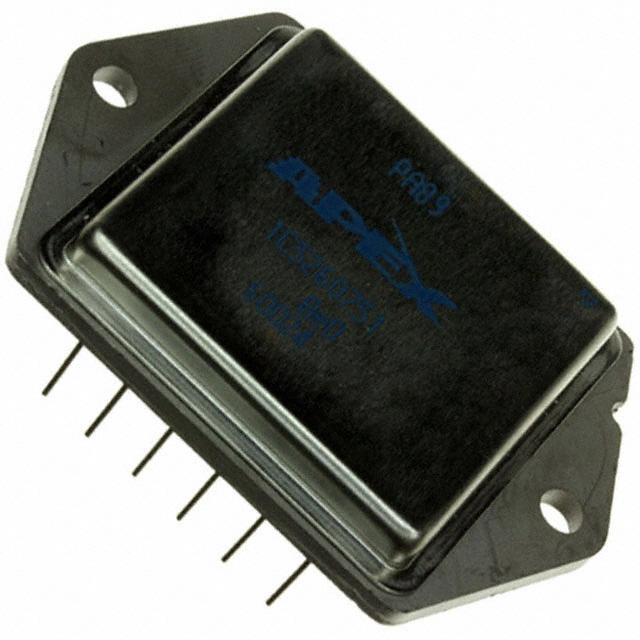
 Datasheet下载
Datasheet下载

